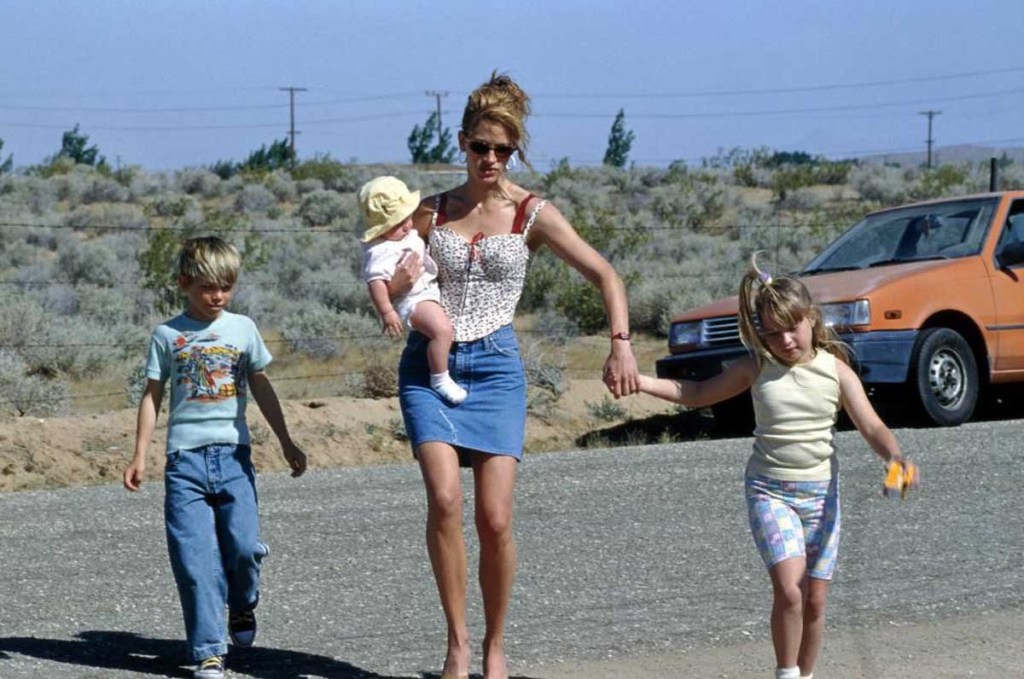TOUGH LOVE: Alabama ranked the worst for working mothers
Published 10:00 pm Saturday, May 13, 2017

- A scene from the film Erin Brockovich which highlighted the struggle of a single mother of three who worked for a law firm in a class action lawsuit against an energy company.
Being a working single mother is arguably the toughest job there is.
You work longer hours for less pay than your childless and/or married female coworkers. More of your income goes to housing and child care, with less money available for necessities like food, clothes and utilities.
And when you come home, there’s still the other job of raising your children, preparing meals, helping with homework and cleaning, just to name a few.
In Cullman County, 30 percent of children live in single-parent homes, roughly 5,000, which is down from the Alabama average of 38 percent and national rate of 34 percent, according to the U.S. Census Bureau.
A quarter of American children under 18 —about 17.2 million in all — are being raised without a father and 40 percent live below the poverty line. More than half live in “extreme poverty” with incomes below half of the federal poverty level, living on just $200 a week.
In Alabama, it’s particularly hard to be a single working mother. It came in dead last on the personal-finance website WalletHub’s “Best and Worst States for Working Moms.” Analysts compared all 50 states and the District of Columbia on 13 key metrics, from median women’s salary to female unemployment rates and day-care quality.
Alabama ranked 48th for gender pay gap, the ratio of female-male executives and percentage of single-mom families in poverty; 43rd for female unemployment; 40th for parental leave policy; 33rd for median women’s salary (adjusted for the cost of living); 30th for average length of a woman’s workday and 28th for pediatricians per capita.
The median income for a home led by an unmarried mom was $24,403 — not even a third of the $84,541 for families headed by married parents, according to Census data. The poverty rate for single-mother families in 2015 was 36.5 percent, nearly five times more than the rate 7.5 percent for married-couple families.
Child care costs exceed the cost of rent in every state, taking a huge bite out of household income, according to WalleyHub’s study.
About two-thirds of single mothers work outside the home which is slightly higher than married mothers who have paid jobs. But the key difference between the two is their employment stability; only half of single moms reported being employed full-time all year.
“A recent cross-national comparison indicates that the 51 percent poverty rate of U.S. single parent households is nearly twice the average across similar high income countries, even though U.S. single mothers have higher rates of employment,” said Kristi Williams, Ohio State University associate professor of sociology and senior scholar at the Council on Contemporary Families.
“Our family policy has simply not kept up with our changing demographic reality and the result is that many families and children are suffering.”
Unfortunately, statistics show working single mothers seem to start out behind married counterparts before they have children. Unmarried mothers generally have lower incomes, lower education levels, and are more likely to be dependent on welfare assistance compared with married mothers.
Those obstacles follow them into the job market where they face women with more education who may have the stable financial support of not only spouses but also the safety net of parents. The statistics show a pattern of children born into unstable households — single-parent, low-income, low-educational attainment — growing up to have children born into the same or worse circumstances.
Children born to unmarried mothers are more likely to grow up in a single-parent household, experience unstable living arrangements, live in poverty, and have socio-emotional problems, according to the non-profit research organization, Child Trends.
They are more likely to have low educational attainment, engage in sex at a younger age and have a birth outside of marriage, and as adults, they are more likely to be idle (neither in school nor employed), have lower employment status and income, and have more troubled marriages and more divorces than those born to married parents.
Despite these negatives trends, one societal shift should be noted. The majority of children born to unmarried parents still grow up with both parents in their home. Between 2006 and 2010, 58 percent of unmarried births were to cohabiting parents — up from 40 percent in 2002.
Children born to cohabiting parents are more likely to see their parents eventually marry than are those born to non-co-residential parents, according to Child Trends. However, these children still experience higher levels of socioeconomic disadvantage and fare worse across a range of behavioral and emotional outcomes than those born to married parents.
Financial Help for Single Mothers in Alabama
Alabama is one of the poorest states in America, where one in four children live in poverty. In today’s economy, it wouldn’t be difficult to imagine the plight of single women raising children alone. Fortunately, for single mothers in Alabama, there are several forms of assistance available to them.
Alabama was dead last on the personal-finance website WalletHub’s “Best and Worst States for Working Moms.” Analysts compared all 50 states and the District of Columbia on 13 key metrics, from median women’s salary to female unemployment rates and day-care quality.





